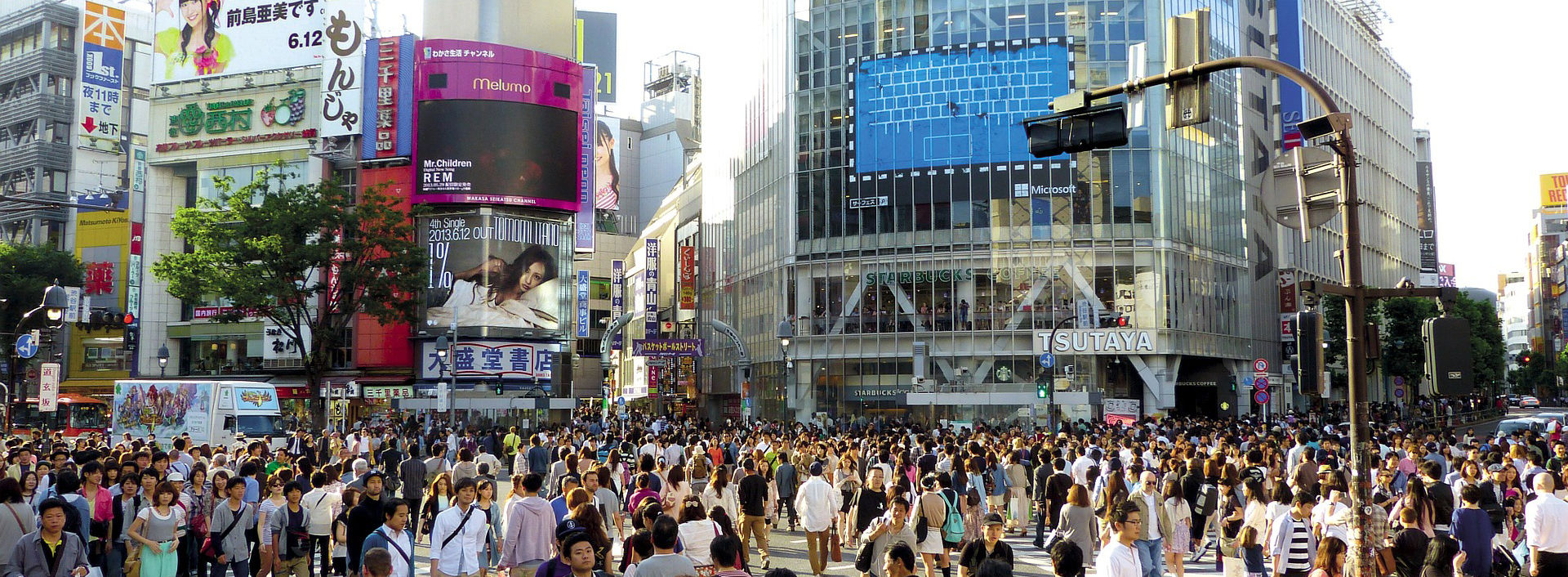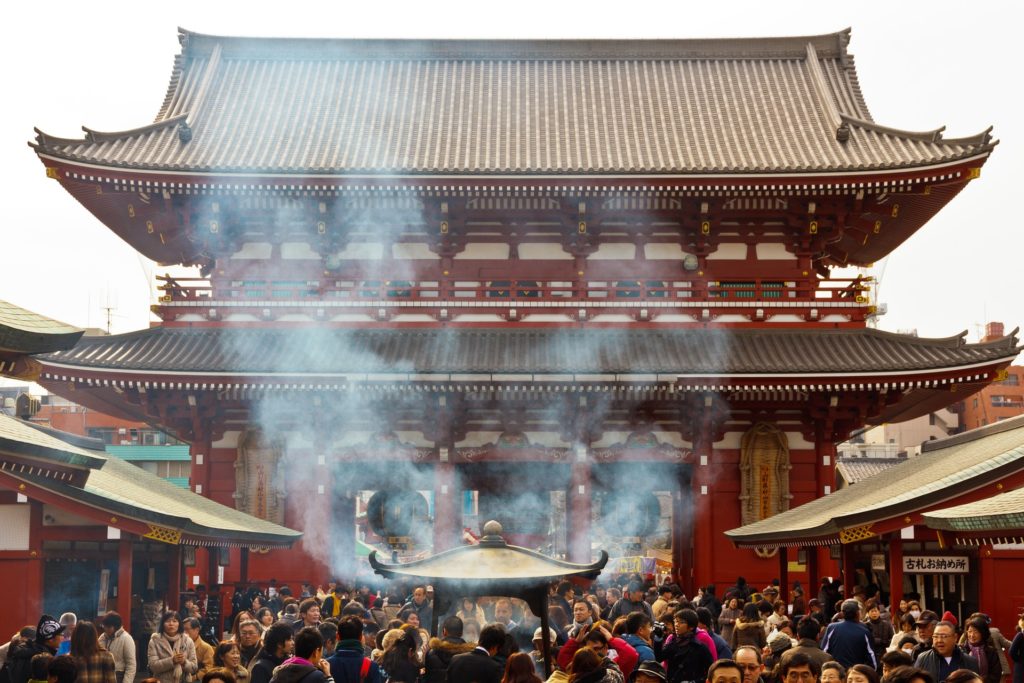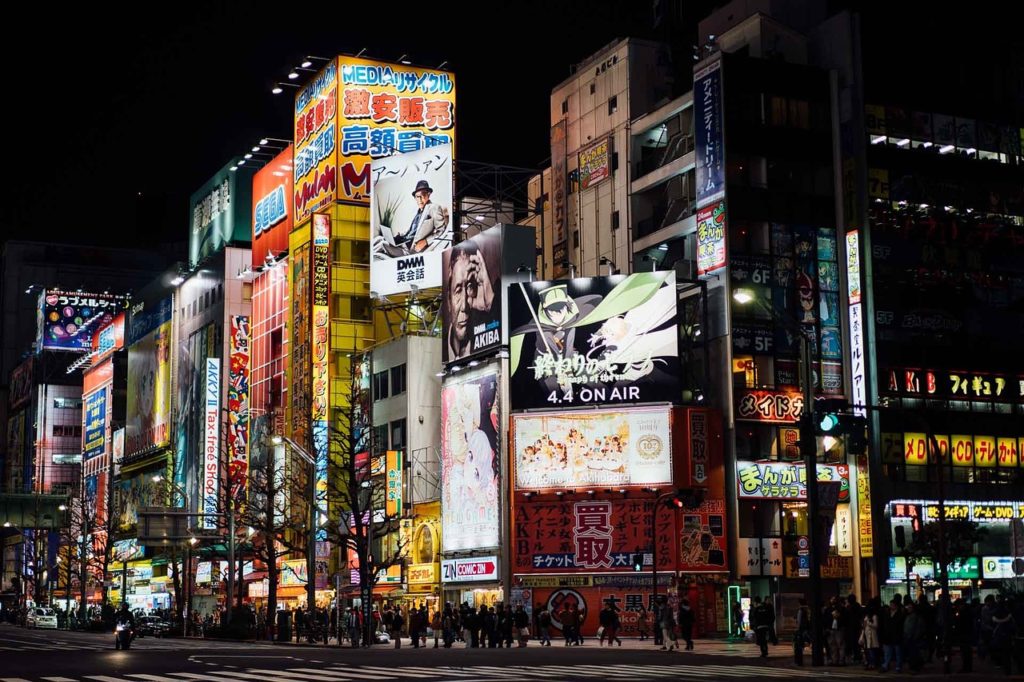
Tokyo, the capital city of Japan, is one of the densest and most populous cities in the world. Spread around its 23 wards are numerous cultural, historical, and modern attractions that welcome several millions of tourists every year.
How To Get There
Tokyo is home to two airports that handle many domestic and international flights every day.
Narita International Airport, which is made up of three terminal buildings that operate a huge volume of Japan’s international and domestic air traffic, is located in Narita, a city that is about 60 to 90 minutes outside of Tokyo by train.
Haneda Airport, on the other hand, hosts more domestic flights than international flights, and is only about a 30-minute train ride away from central Tokyo.
Another popular way to access Tokyo within Japan is via the Shinkansen. It only takes about three hours to get there from Kyoto or Osaka.
Top Attractions
Asakusa

To get a feel of old Edo while in Tokyo, Asakusa is the place to go. It is where you can find the Sensoji Temple, a 7th century Buddhist temple that is accessible on foot via the Nakamise Dori, a shopping street lined with numerous shops and stalls that sell local and traditional goods. The Sumida River is also nearby, and a 20-minute stroll across it takes you to the 634-meter tall Tokyo Skytree, the country’s tallest structure that offers 360-degree views of the metropolis.
Shibuya
Best known for its busy pedestrian crossing, Shibuya is packed with dining, shopping, and entertainment establishments. As soon as you get out of Shibuya Station, you are greeted by towering buildings adorned with huge TV screens and bright, colourful ads. You can easily kill an entire day checking out Tokyu Hands, Shibuya Mark City, Shibuya 109, and other boutiques and malls along Koen Dori and Spain Slope, and end the day at any of Center Gai’s nightclubs and bars.
Shinjuku
An active and bustling area that houses many of Tokyo’s largest businesses, hotels, and malls, Shinjuku prides in its wide selection of entertainment options for all budgets. Easily accessible via Shinjuku Station, the busiest railway in the world, it has the Shinjuku Gyoen, a beautiful public park that is among Tokyo’s most popular sakura and autumn leaves viewing spots; the Tokyo Metropolitan Government Office, which offers panoramic views of the metropolis; Omoide Yokocho, also known as Piss Alley, an area with numerous small yakitori, ramen, and sushi eateries; Kabukicho, the country’s largest and most popular red light district, home to love hotels, pachinko parlours, bars, nightclubs, and restaurants; and large, multiple-storey shopping malls, like Takashimaya, Odakyu, and Isetan.
Tokyo Disney Resort
Consists of two theme parks, a number of resort hotels, and a mall and several shopping options, Tokyo Disney Resort is a favourite spot of Disney fans of all ages from all over the world. Tokyo Disneyland features seven themed areas that are modelled after the Disneyland in Anaheim in California, and Tokyo DisneySea is the only one its kind in the world, comprised of seven themed sections that focus on popular sea mythology and folklore.
Odaiba
A man-made island with a wide selection of entertainment and shopping options, Odaiba is where you can find some of Tokyo’s most impressive architectural structures, such as the Rainbow Bridge, Fuji TV building, Telecom Center, Palette Town, and Tokyo Big Sight. The famous giant, life-size Gundam statue is found in front of DiverCity Tokyo Plaza.
Roppongi
One of Tokyo’s most foreigner-friendly districts, Roppongi is a highly-urban community that offers a lively nightlife, and some of the most interesting museums and architectural creations in the country. Roppongi Hills, situated in the centre of it all, is renowned for its skyscrapers, restaurants, and shops. It has the Mori Tower, which provides an unobstructed view of the area from 50 storeys up; and the Mori Art Museum, which displays some of the most innovative contemporary art collections to date.
Harajuku
Situated between Shibuya and Shinjuku, Harajuku is known for its youthful and quirky vibe, with many shops and boutiques (specifically along Takeshita Street) that cater to Japanese teens who are into the unconventional and eccentric fashion trends. On the opposite side of Harajuku Station are the Meiji Shrine, a Shinto shrine built in the early 1900s; and the Yoyogi Koen, a spacious city park with several ponds, forested sections, and lawns.
Akihabara
Regarded as Japan’s centre of otaku culture, Akihabara is a vibrant district with numerous high-rise buildings that house electronics stores, maid cafes, cosplay shops, and anime figures and manga stores. Mandarake, Super Potato, Sofmap, Yodabashi Camera, Radio Kaikan, Don Quijote, and Gamers are just a few of the most popular ones.

Ueno
With countless varieties of trees that look magical during peak cherry blossoms and autumn leaves seasons, Ueno Park in Ueno sees dense crowds who want to get the best seats to view the gorgeous canopies of pink sakura flowers around mid-April and the magnificent red and yellow leaf colours around late November.
Year-round, the area’s museums, such as the Tokyo National Museum and the Tokyo Metropolitan Art Museum, and the Ueno Zoo, are a favourite among locals and tourists looking for an educational experience.
Getting Around
An extensive network of train, metro, subway, and bus lines operated by the Japan Railways Group and several private companies is present in Tokyo. Probably the most popular among them, often used by tourists, is the JR Yamanote Line, which travels in a loop that links the top districts, including Shinjuku, Shibuya, Ikebukuro, Ueno, and Tokyo.
For convenience, get a prepaid IC card, either a PASMO or a Suica, which you can simply tap onto the card readers every time you enter and exit the turnstiles at train, metro, and subway stations, as well as each time you get on and off the buses.
Weather
Tokyo experiences four seasons – winter, spring, summer, and autumn.
Winter days in Tokyo can see temperatures go as low as 2 degrees Celsius, but are generally sunny and dry. Snow very rarely happens. In spring, the weather is still a bit cold but manageable for some cherry blossoms viewing and other outdoor activities. From June to September, the city gets extremely hot and humid, with temperatures reaching the low 30s. In August and September, expect many days with heavy rainfall as the typhoon season peaks. Once October kicks in, the days become cooler and drier. Peak autumn season in Tokyo is around mid-November to early December.
